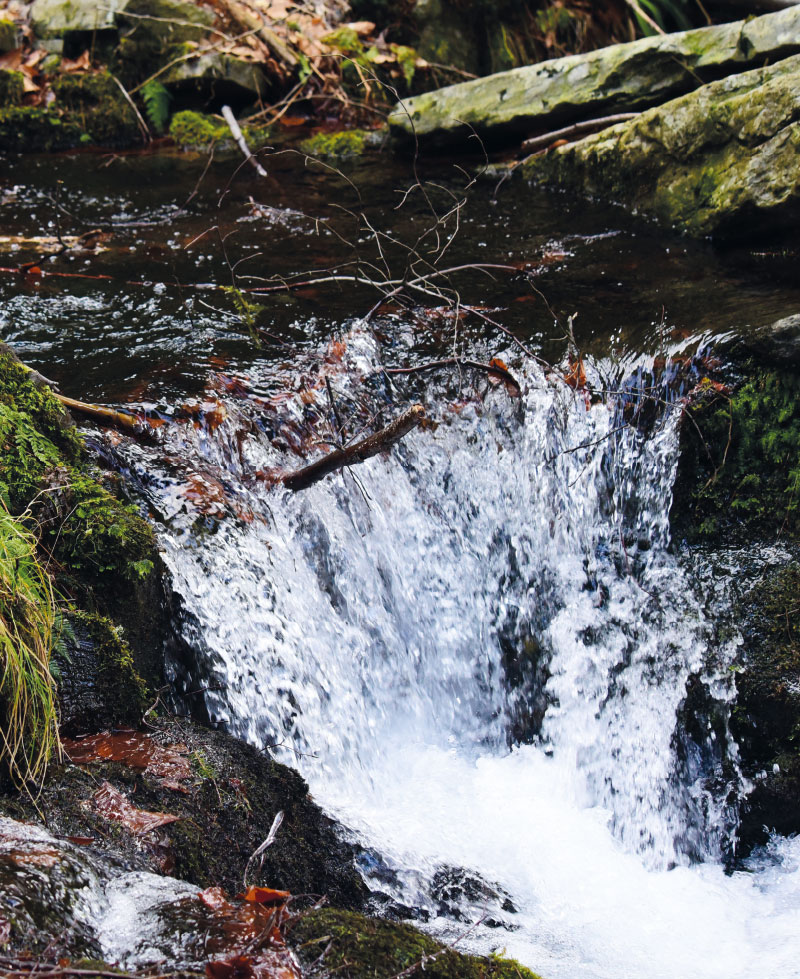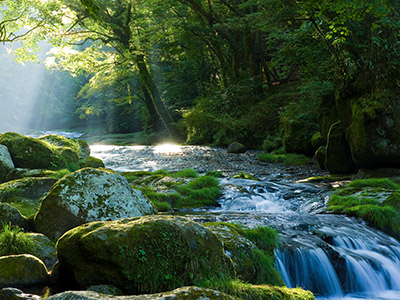Groundwater abstraction noticeably reduces the flow of some watercourses during the dry season
The paper highlights the fact that some significant watercourses dry up during periods of minimal flows due to groundwater abstraction. It provides a summary of the most affected significant watercourses in the Czech Republic. Large concentrated groundwater abstraction has a considerable impact on small and medium-sized watercourses. To select the most significant effects of abstraction on stream flows, we used the ratio of abstraction to 355-day flows from 1931–1960. Watercourses exceeding 30 % were selected. In half of the selected cases the following relationship was confirmed: the 355-day flow from 1931–1960, reduced by the abstraction rate, is approximately equal to the 355-day flow from 1991–2020. The cases where this relationship does not apply can be explained by changes in abstraction volumes, declining groundwater levels and flows in the wider area due to groundwater collection and the use of static groundwater reserves. The effect of climate change is unlikely to be present in the baseflow in the cases studied. Our analysis identified 13 cases where groundwater abstraction is severely affecting the flow of significant watercourses. In about half of these cases, there is an alternative source of water that should be used when the flow of the watercourse is at a minimum. Another option to protect water resources is to apply the minimum groundwater level or minimum residual flow under the Water Act.
Interview with doc. RNDr. Zbyněk Hrkal, CSc., hydrogeologist, writer, and populariser of water management
The October issue of the VTEI journal deals mainly with groundwater and its management. We therefore discussed the promotion of this topic with a colleague who is engaged in research in groundwater, has been lecturing on hydrogeology
for a long time at the Faculty of Science, Charles University in Prague, and deals with the topic of water management in his publications. “The main problem in the world is not a physical lack of water, but poverty, illiteracy, and economic backwardness,” says Zbyněk Hrkal.
Protected areas for surface water accumulation from a hydrogeologist’s the point of view – the effect of possible realization of surface water accumulation on hydrogeological conditions
Suitable areas for the accumulation of surface water have been defined in the Czech Republic, potentially serving mainly for the supply of potable water and for mitigating the adverse effects of floods and drought. The sites are listed in the General Scheme on the Accumulation of Surface Water, which was obtained by the Ministries of Agriculture and the Environment following the previous long-term territorial protection of prospective water reservoirs. Before any decision to build these reservoirs, it is necessary to assess the project from various points of view. This article presents an evaluation of selected sites from a hydrogeological point of view. Among other things, it deals with the analysis of the location of potential res-ervoirs in the hydrogeological environment, the effect on the quantity and quality of groundwater, and the potential impact on the used groundwater resources. After the construction of the reservoirs, the groundwater level of the shallow aquifer will rise, and consequently, groundwater storage will also increase. However, it is necessary to assess the sites individually; there are often potentially negative effects of future reservoirs on groundwater.
The Výrovka river basin as a suitable area for monitoring and comparing hydrological and landscape characteristics
The Výrovka river basin, as a compact area covering 542.5 km2, is very suitable for monitoring hydrological characteristics and comparing them in different landscape types. It is located on the border of the Lower Vltava and Upper and Middle Elbe sub-basins, extending in a range of 175–555 m above sea level, with a total of six landscape types according to the typology of the contemporary landscape of the Czech Republic. Simultane-ously, there is a varied mosaic in terms of geological subsoil and soil types. There have also been major changes in land use in this basin, mainly due to intensive agricultural activity and related watercourse modifications and amelioration. Monitoring activities within the project SS02030027 ”Water systems and water management in the Czech Republic in conditions of climate change” are currently taking place in the Výrovka river basin.
Research of important groundwater sources of Czech-Saxony transborder region
An interesting and useful topic that can be addressed within the European Union is the issue of transboundary aquifers. Groundwater is often used as an important water resource on both sides of a common state border and can therefore be affected by cross-border waters.
The research of water springs in cities
During 2011–2015 we have studied water springs remaining in big cities. The main objective was verifying the possibility of using local springs as local sources of water in risk situations as failures of water or energy supply systems.





